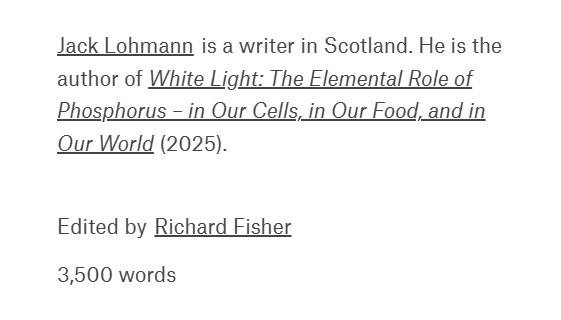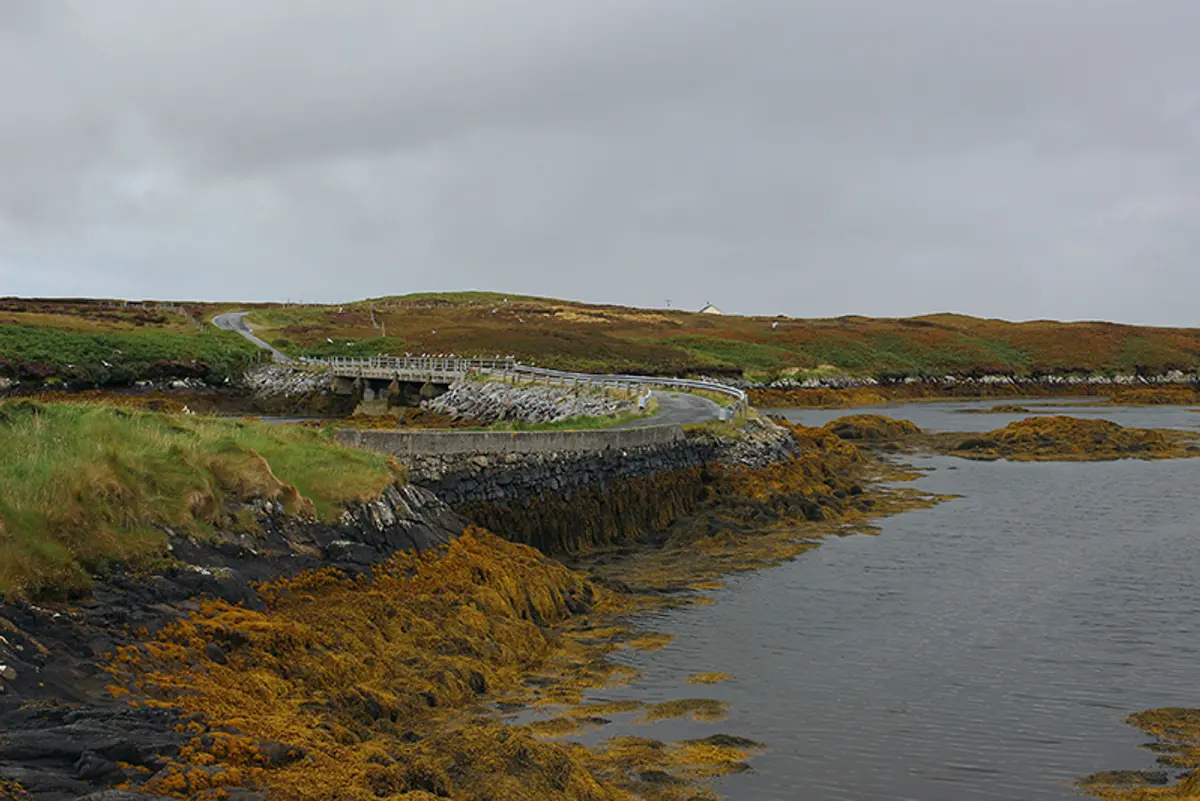Our phosphorescent world [View all]
 This life-giving element, stored in rock and organic material, moves around Earth in an ancient cycle we have just broken
https://aeon.co/essays/the-cycling-of-phosphorus-is-the-basis-for-all-life-on-earth
This life-giving element, stored in rock and organic material, moves around Earth in an ancient cycle we have just broken
https://aeon.co/essays/the-cycling-of-phosphorus-is-the-basis-for-all-life-on-earth
 Decades of phosphate mining have left much of the Pacific island-state of Nauru resembling a lunar landscape. Photo supplied by the author
Decades of phosphate mining have left much of the Pacific island-state of Nauru resembling a lunar landscape. Photo supplied by the author

On the Hebridean island where I live, off the western coast of Scotland, windy days are smelly ones because large amounts of seaweed wash ashore, accumulating on the northern ends of beaches. For some, this might be an unremarkable occurrence, but here, on our small island, we see seaweed as a gift. There are around 1,000 of us – crofters and office workers, incomers like me, and those who have stayed forever. Daily travel is dependent on the tides, the swells, and the weather at the ports that host the ferries. Limitations like these keep Earth’s cycles in continual focus. I like it this way. I lock my windows when a storm is coming, and I watch the waves. Afterward, I go and look for seaweed. In the winter, when storms are stronger, a man from the village next to mine drives his tractor down to the beach and drags the seaweed up to a higher spot. He creates a towering pile that smells like faeces. It feeds the island. Here, we use seaweed as a fertiliser, because it is rich in elements that humans and plants both need for living, such as nitrogen and potassium. It also contains one particular substance that I have spent much of my life thinking about: phosphorus.
 Seaweed on the shores of Benbecula, an island in the Outer Hebrides in Western Scotland. Courtesy Davide Gorla/Flickr
Seaweed on the shores of Benbecula, an island in the Outer Hebrides in Western Scotland. Courtesy Davide Gorla/Flickr
Stored in rock and organic material, phosphorus cycles slowly around Earth, through magma and mountains, down rivers, through waste and into oceans. Without it, there’d be no life – every living being needs it to grow. Unlike other mined materials, we all eat it. In the human body, it gives our cells energy, structure and identity, and it is particularly concentrated in our bones. Rare enough to be notable, common enough to be necessary, phosphorus tracks the development of our planet. Over billions of years, as life and Earth evolved, phosphorus held the two together. Two hundred million years ago, when Pangaea broke apart, all those newly exposed continental edges leaked phosphorus into the oceans, leading to a biological boom. Something similar, though smaller, is happening today due to the rapid growth and uplift – and exposure – of the Himalayas. Trace amounts of phosphorus in mountains are enough to raise the biological productivity of the world.
Phosphorus fascinates me because it is a tangible expression of big ideas – a literal crystallisation of life on our planet. I am not the first observer to see worlds within this element. Phosphorus over the years has inspired bouts of marvelling and poetry, of reflection on our place within the world. In the 19th century, the theologian and geologist William Buckland found in phosphate ‘records of warfare, waged by successive generations of inhabitants of our planet on one another’. The naturalist Leonard Jenyns, some years later, saw in phosphate rock ‘the tracings of the fingers of God’.
This is a life-giving material that runs throughout Earth, a vibrant substance that is accessible to everyone. (Chemically isolated, it literally glows.) And yet humanity, on the whole, has turned it into a pollutant, creating life – and death – in the wrong places. In excess, it causes eutrophication, leading to algal blooms or sargassum outbreaks that suffocate other aquatic life. Our species’ relationship with this essential element has mirrored our own trajectory from living within nature’s cycles to imposing linear, extractive systems on the planet. By mining million-year-old phosphate and releasing it into the world’s waters, we are changing the biological composition, and even the geological structure, of the world. Understanding the phosphorus cycle means reckoning with our influence on Earth.
snip



